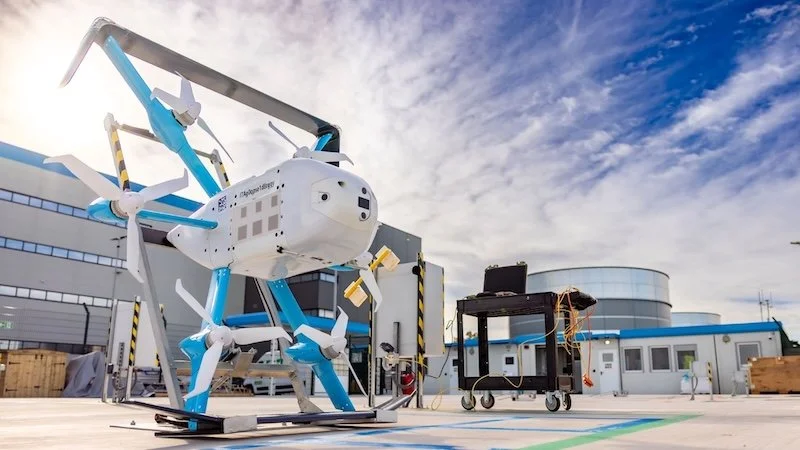Understanding demand charges and how they impact your business's energy costs
Understanding demand charges and how they impact your business’s energy costs can be a daunting task for any business.
Whether you’re a small business or a large corporation, understanding your energy costs is essential in helping you make informed decisions about your energy usage habits. Demand charges are a unique and often misunderstood element of energy billing, making them especially tricky to navigate.
In this article, we’ll be discussing what demand charges are and how they can affect your business’s overall energy costs. We’ll go over the various ways demand charges are calculated, different strategies for reducing your demand charges, and how you can use energy analytics to your advantage in order to minimize your energy expenses.
By the end of this article, you’ll have the knowledge to make an informed decision about your energy costs, and how you can use this information to ensure that you're getting the best value for your energy-related expenses.
Speaking of value, get the best deals on your energy rates only at https://businessenergycomparison.com/
1. Overview of demand charges
Demand charges are an additional cost on top of your normal electricity costs. They are based on the highest amount of energy used during any 15-minute period of the month.
By optimising your usage, you can reduce your overall demand charges and save on your energy costs. It is important to understand how demand charges work in order to effectively manage them.
2. Definition of demand charge
A demand charge is a fee charged by a utility company based on the maximum rate of energy used by a customer over a given period of time, typically a month. It is not based on the total amount of energy used, but rather on the peak demand of the customer’s energy usage.
This peak demand is usually determined by taking the highest average peak load of a customer’s energy within the span of a 15 or 30-minute interval. Demand charges can vary significantly depending on the customer’s peak energy usage and the utility company.
3. Types of demand charges
Businesses need to be aware of the different types of demand charges that may be included in their energy bills. Demand charges refer to the cost of peak usage of electricity and are based on the highest amount of energy used during a certain period of time.
The three main types of demand charges are:
1. Contracted Demand: This is a fixed charge based on the peak electric demand agreed upon in the customer’s contract.
2. Ratchet Demand: This is a charge based on the highest peak demand of the previous months or years.
3. Non-Coincident Demand: This is a charge based on the peak demand from multiple locations that occur at the same time.
4. How demand charges are calculated
Demand charges are typically calculated based on your peak energy usage during each billing period.
The peak demand is measured in kilowatts (kW). Your electricity provider will take the highest amount of kW used during each billing period and multiply it by the demand charge rate to calculate the total demand charge.
For example, if your peak usage during a billing period was 10 kW and the demand charge rate is $10/kW, then the demand charge would be $100.
Keep in mind that peak usage will vary depending on the time of year, the day, and even the hour. As such, staying aware of how your energy usage fluctuates will help you better anticipate and manage your demand charges.
5. Factors that influence demand charges
It is important to understand what factors influence demand charges so that you can make wise energy decisions for your business. The main factors that influence demand charges are peak demand, the time of day that peak demand occurs, the season, the temperature, and the type of rate you are on.
Peak demand is the maximum amount of electricity that your business uses over a specific time period, usually one month. The time of day that peak demand occurs is also important, as demand charges are often higher during peak hours. Seasonal factors, such as summertime air conditioning use, can also have an impact on demand charges.
Temperature plays a role as well, as demand charges typically increase in hot weather. Lastly, the type of rate you are on can affect demand charges. Businesses on time-of-use rates will experience higher demand charges than those on fixed rates.
6. Understanding the nuances of peak demand
Peak demand is the highest amount of energy that your business uses during a certain period of time. Depending on your utility provider, peak demand may be measured in either 15-minute or 30-minute intervals.
Knowing when and how much energy your business uses during peak times can help you manage your energy costs and make sure that you don’t pay for more than you need.
Analysing your peak demand can also help you identify areas in which you can make efficiency improvements, such as upgrading to energy-efficient equipment or using energy-saving techniques.
7. Ways to reduce demand charges
Demand charges are one of the most expensive components of a business's energy bill and can be especially challenging to manage and minimize. Fortunately, there are a few steps businesses can take to reduce their demand charges.
From investing in energy-efficient equipment and appliances to scheduling energy-intensive tasks during off-peak hours, the following tactics will help reduce demand charges and the overall energy costs associated with your business.
8. How demand charges are billed
Demand charges are billed based on the highest 15-minute average of the total amount of energy used each month. This can lead to higher bills, since businesses are charged for the highest 15-minute average even if the total energy used for the month was lower.
To reduce the impact of demand charges, businesses should focus on minimising their peak usage times and strive to keep their 15-minute averages as low as possible. With some strategic energy management, businesses can significantly reduce their demand charges and lower their overall energy costs.
9. Tips for mitigating demand charges
Business owners must understand how demand charges work in order to effectively manage their energy costs.
Demand charges are calculated based on the maximum amount of power your business uses during peak times. To help manage these costs, here are nine tips for mitigating demand charges:
1. Take advantage of demand response programs.
2. Utilise new technologies, like Energy Intelligence Software (EIS).
3. Implement energy efficiency measures.
4. Utilise renewable energy resources.
5. Adjust processes and operations.
6. Monitor and analyse peak usage.
7. Spread out energy use throughout the day.
8. Change rate structures.
9. Invest in energy storage solutions.
By properly understanding demand charges and implementing these tips, businesses can effectively manage their energy costs and reduce their demand charges.
10. Seeking professional advice for demand charge management
Businesses can benefit from professional advice when it comes to managing demand charges.
Consulting with an energy expert or financial advisor can help businesses develop a plan for managing demand charges and help them understand the potential impact of demand charges on their energy costs.
Professional advisors can also help businesses identify potential strategies for reducing their demand charges, such as through energy efficiency, flexible load shaping, and time-of-use rate strategies.
In conclusion, understanding demand charges and their impact on your business's energy costs can help you make more informed decisions about your energy usage.
By managing your peak demand times and utilising energy efficient practices, you can minimise the amount of energy that you use and, in turn, reduce energy costs. With the right energy management plan in place, you can maximise the efficiency of your business's energy use and save money in the long run.















Continue reading…